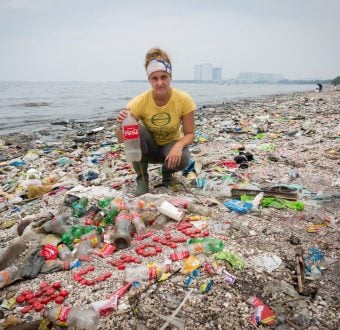On Saturday, November 15, a deadly chemical gas leak at DuPonts La Porte, Texas plant claimed the lives of four workers. All it took was a leak of an estimated 100 pounds of methyl mercaptan to kill them and injure a fifth worker who is currently hospitalized.
The company espouses “safety” as a core value, but will once again have to explain to the victims families of why they did not prevent this tragedy.
Methyl mercaptan is an agricultural chemical used to make insecticides and fungicides. It is also used in feed for livestock and is an additive in plastics and in jet fuels.
The strong smell from the leak lingered throughout Houston and raised concerns among neighboring communities living near the facility. The smell has been reported forty miles away from the facility.
Methyl mercaptan isnt even the worst hazard at this plant.
According to Duponts reports to the EPA, 1.6 million people live in the LaPorte plants 25-mile vulnerability zone putting them at risk due to the plants bulk use and storage of hydrofluoric acid.
Since 2011, the company has reported one accidental release of hydrofluoric acid, but the plant has also received 45 notices in the last five years for not being in compliance with state law.
The U.S. Chemical Safety Board (CSB) previously investigated three DuPont accidents that occurred in a span of 33 hours in 2010 at the Belle, West Virginia plant, one of which resulted in the death of one worker after the release of phosgene gas. That same year a worker was fatally injured at the Buffalo, New York DuPont facility.
The CSB will begin their investigation this week into the La Porte plant.
Texas is no stranger to chemical disasters and this tragedy comes on the heels of the public comment period for the EPAs Request For Information (RFI) to modernize chemical facility safety. The RFI was issued in response to President Obamas Executive Order (EO) directing federal agencies to modernize chemical facility regulations. The EO was released right after the fertilizer plant explosion in the town of West, Texas, which took the lives of 15 people and destroyed miles of residential blocks.
Greenpeace is part of the Coalition to Prevent Chemical Disasters, which represents over 150 organizations from labor, environment and environmental justice and is urging the EPA to finalize new rules by 2016.
The Coalition alerted members and mobilized over 110,000 comments to the EPA, underscoring the need to require facilities to adopt safer chemical processes and technologies.
In 2012, the Clorox Company completed conversion of all of their U.S. plants and eliminated a chlorine gas hazard to over 13 million people living near their facilities. Safer alternatives are available for virtually all of these inherently dangerous chemical processes. Wherever there is a safer process available it ought to be required. Unfortunately, the EPA is not moving quickly enough and at the current pace may fail to finalize new safety rules before President Obama leaves office.
The lead chemical lobby in Washington, the American Chemistry Council (ACC), submitted comments to the EPA saying that new requirements are unnecessary. The American Petroleum Institute, representing the big oil companies seems to believe that disasters like West, Texas — and now DuPonts La Porte tragedy– are not a failure of regulatory structure and that there is not enough evidence to require new safety regulations.
Systems need to change because the chemical industry continues to operate under voluntary guidelines where operations are presumed safe until proven otherwise.
History continues to show us that it only takes one disaster to impact the lives of workers and neighboring communities. There is an enormous human cost to these inherently dangerous chemical processes and one that this administration should not turn a blind eye to or wait for the next disaster to expedite action. Its time for the President to say enough is enough and give the EPA a deadline by which to prevent these disasters once and for all. Please take action today.



